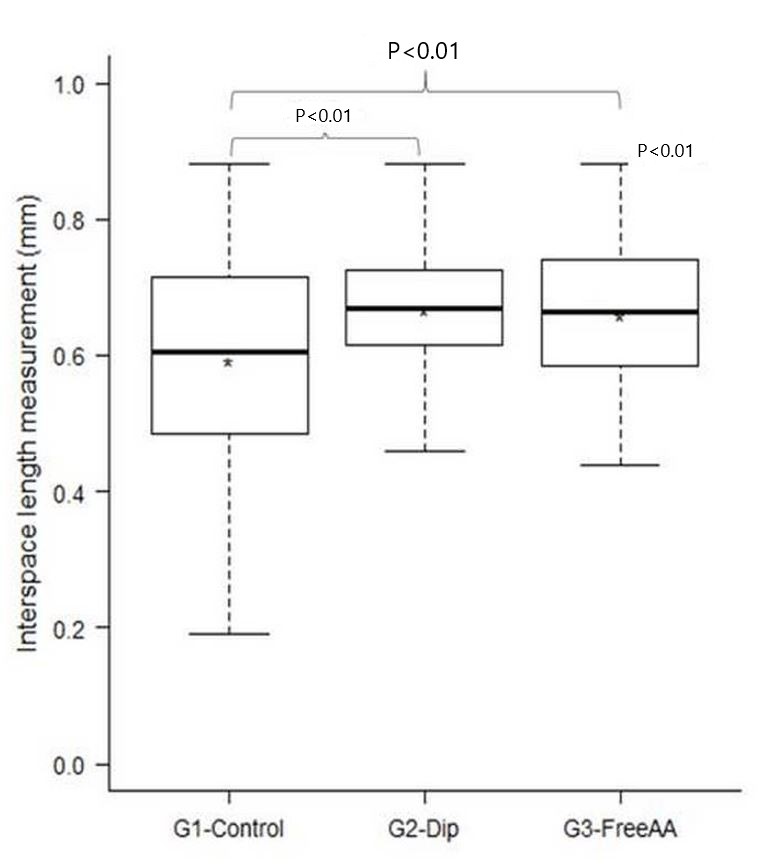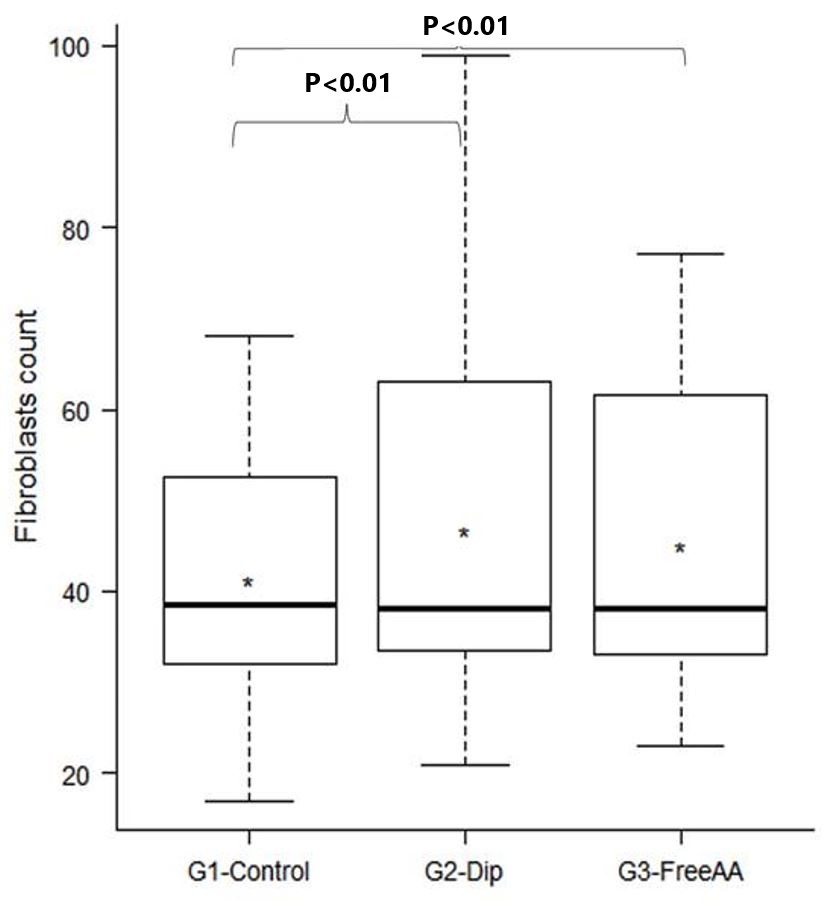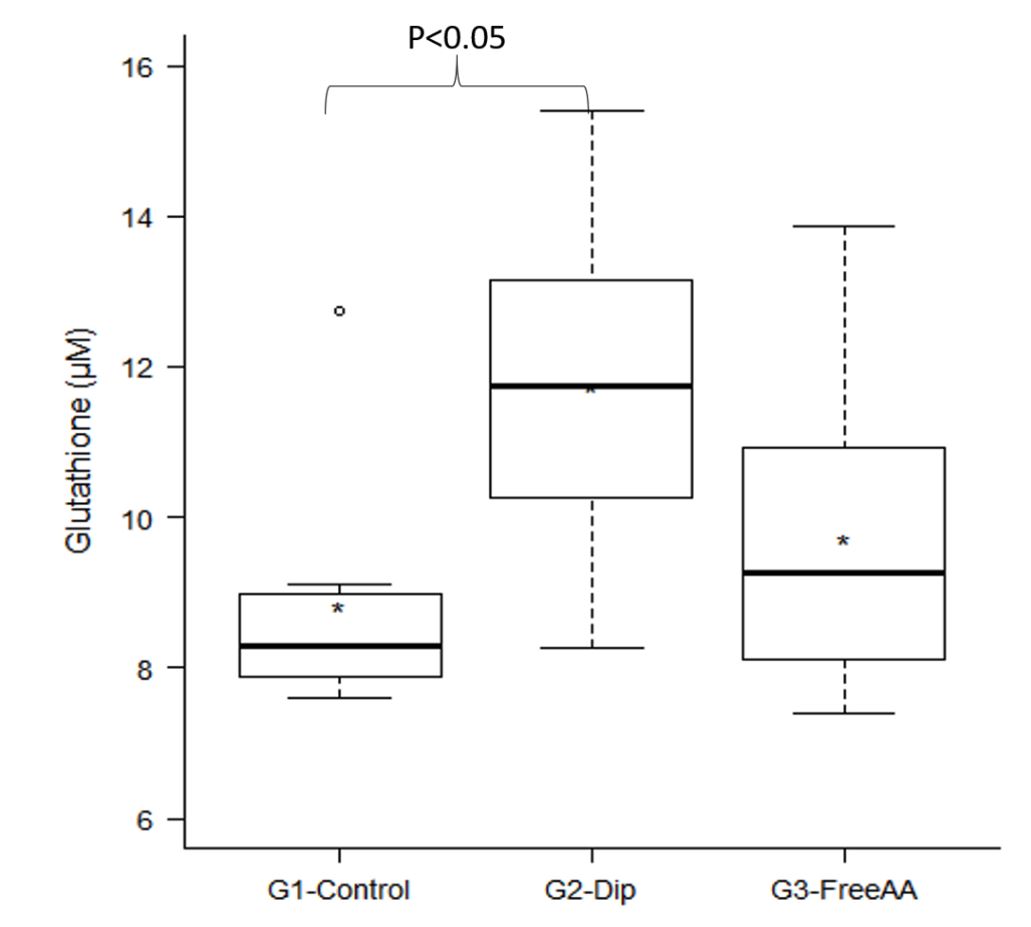Abstract
This study was carried out to evaluate the effect of Glutamine, as a dipeptide or a free amino acid form, on the progression of burn injuries in rats. Thirty male Wistar rats were burned with a comb metal plate heated in boiling water (98 °C) for three minutes, creating four rectangular full-thickness burn areas separated by three unburned interspaces (zone of stasis) in both dorsum sides. The animals were randomized into three groups (n=10): saline solution (G1-Control) and treated groups that orally received Glutamine as dipeptide (G2-Dip) or free amino acid (G3-FreeAA). Two and seven days after burn injury, lesions were photographed for unburned interspaces necrosis evolution assessment. Seven days after injury, glutathione seric was measured and histopathological analysis was performed. By photographs, there was a significant reduction in necrosis progression in G3-Free-AA between days two and seven. Histopathological analysis at day 7 showed a significantly higher stasis zone without necrosis and a higher number of fibroblasts in G2-Dip and G3-FreeAA compared with G1-Control. Also, glutathione serum dosage was higher in G2-Dip. The plasmatic glutathione levels were higher in the G2-Dip than the G1-Control, and there was a trend to higher levels in G3-FreeAA. The reduction in histological lesions, greater production of fibroblasts, and greater amounts of glutathione may have benefited the evolution of burn necrosis, which showed greater preservation of interspaces.
Keywords:
burns; rats; necrosis; glutamine; oxidative stress

 Thumbnail
Thumbnail
 Thumbnail
Thumbnail
 Thumbnail
Thumbnail
 Thumbnail
Thumbnail
 Thumbnail
Thumbnail
 Thumbnail
Thumbnail





